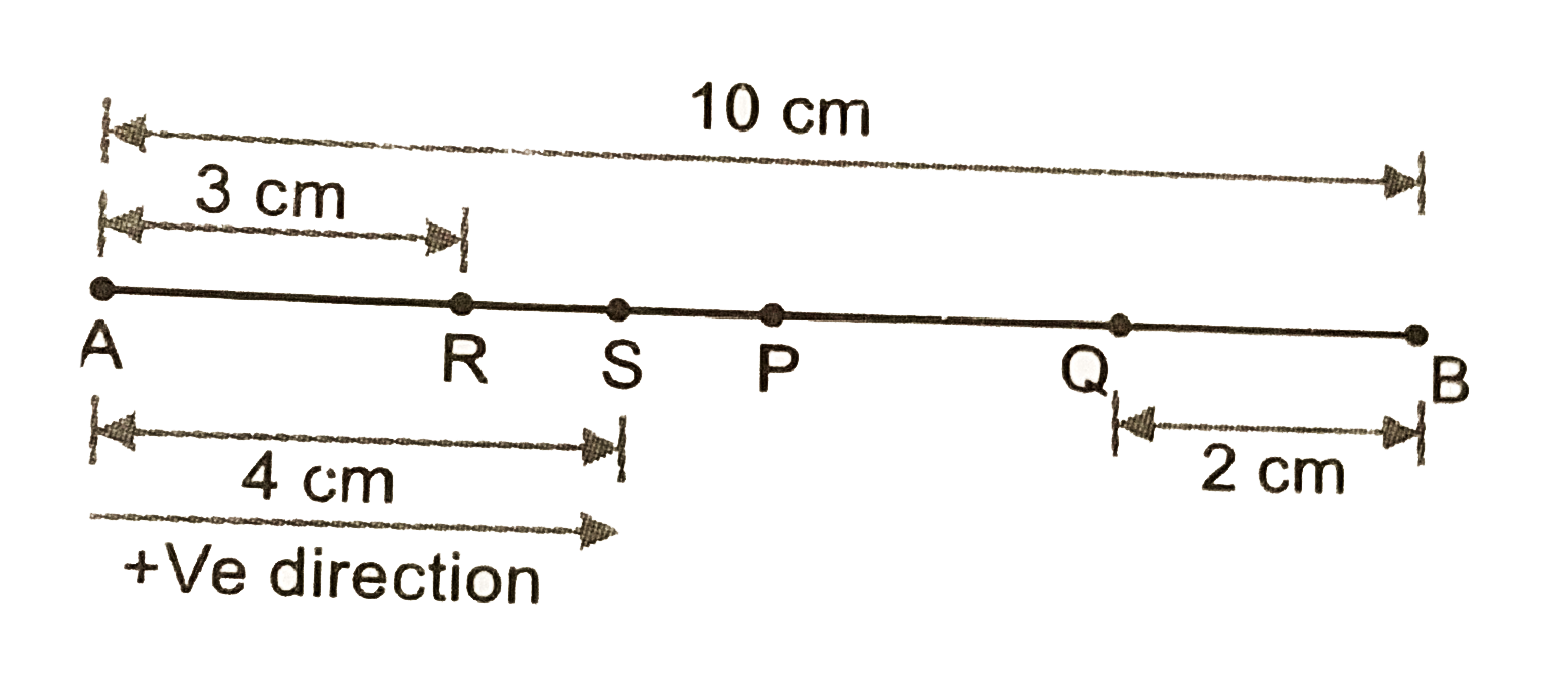A particle is in linear simple harmonic motion between two points, A and B, 10 cm apart. Take the direction from A to B as the positive direction and give the signs of velocity, acceleration and force on the particle when it is
at 2 cm away from B going towards A.
Similar Questions
A particle is in linear S.H.M. between two points A and B, 10 cm apart. Take the direction from A to B as the positive direction and give the signs of velocity, acceleration and force on the particle when it is.
(a) at the end A (b) at the end B,
(c) at the mid point of AB going towards A,
(d) at 2 cm away from B going towards A,
(e) at 3 cm away from A goiing towards B, and
(f) at 4 cm away from A going towards A.

View SolutionA particle is in linear S.H.M. between two points A and B, 10 cm apart. Take the direction from A to B as the positive direction and give the signs of velocity, acceleration and force on the particle when it is.
(a) at the end A
(b) at the end B,
(c) at the mid point of AB going towards A,
(d) at 2 cm away from B going towards A,
(e) at 3 cm away from A goiing towards B, and
(f) at 4 cm away from A going towards A.

View Solution
Knowledge Check
A particle is in linear simple harmonic motion between two points A and B, 10 cm apart (figure) . Take the direction from A to B as the +ve direction and choose the correct statements.
 AThe sign of velocity, acceleration and force on the particle when it is 3 cm away from A going towards B are positive.BThe sign of velocity of the particle at C going towards O is negative.CThe sign of velocity acceleration and force on the particle when it is 4 cm away from B going towards A are negative.DThe sign of acceleration and force on the particle when it is at point B is negative.
AThe sign of velocity, acceleration and force on the particle when it is 3 cm away from A going towards B are positive.BThe sign of velocity of the particle at C going towards O is negative.CThe sign of velocity acceleration and force on the particle when it is 4 cm away from B going towards A are negative.DThe sign of acceleration and force on the particle when it is at point B is negative.A particle is in linear simple harmonic motion between two points. A and B, 10 cm apart (figure.) take direction from A to B as the positive direction and choose the correct statements.

AO= OB= 5cm
BC=8cmAThe sing of velocity, acceleration and force on the particle when it is 3 cm away from A going towards B are positiveBThe sign of velocity of the particle at C going towards B is negativeCThe sign of volocity, acceleration and force on the particle when it is 4 cm away form B going towards A are negativeDThe sign of acceleration and force on the particle when it is at points B is negativeA particle is in linear simple harmonic motion between two points A and B10cm apart (figure). Take the direction form A to B as positive direction and choose the correct statements.
AO=OB=5cm
BC=8cm
 AThe sign of velocity, acceleration and force on the particle when it is 3cm away from A going towards B are positiveBThe sign of velocity of the particle at C going towards B is negativeCThe sign of velocity, acceleration and force on the particle when it is 4cm away from B going towards A are negativeDThe sign of acceleration and force on the particle when it is at point B is negative
AThe sign of velocity, acceleration and force on the particle when it is 3cm away from A going towards B are positiveBThe sign of velocity of the particle at C going towards B is negativeCThe sign of velocity, acceleration and force on the particle when it is 4cm away from B going towards A are negativeDThe sign of acceleration and force on the particle when it is at point B is negative
A particle is in linear S.H.M. between two points A and B, 10 cm apart. Take the direction from A to B as the positive direction and give the signs of velocity, acceleration and force on the particle when it is.
(a) at the end (A) at the end B,
(c) at the mid point of AB going towards A,
(d) at 2 cm away from B going towards A,
(e) at 3 cm away from A goiing towards B, and
(f) at 4 cm away from A going towards A.

View SolutionA particle is in linear simple harmonic motion between two points. A and B, 10 cm apart (figure.) take direction from A to B as the positive direction and choose the correct statements.

AO= OB= 5cm
BC=8cm
View SolutionA particle executies linear simple harmonic motion with an amplitude 3cm .When the particle is at 2cm from the mean position , the magnitude of its velocity is equal to that of acceleration .The its time period in seconds is
View SolutionA particle executies linear simple harmonic motion with an amplitude 3cm .When the particle is at 2cm from the mean position , the magnitude of its velocity is equal to that of acceleration .The its time period in seconds is
View SolutionA particle executes linear simple harmonic motion with an amplitude of 3cm. When the particle is at 2cm from the mean position, the magnitude of its velocity is equal to that of its acceleration. Then, its time period in seconds is
View Solution
